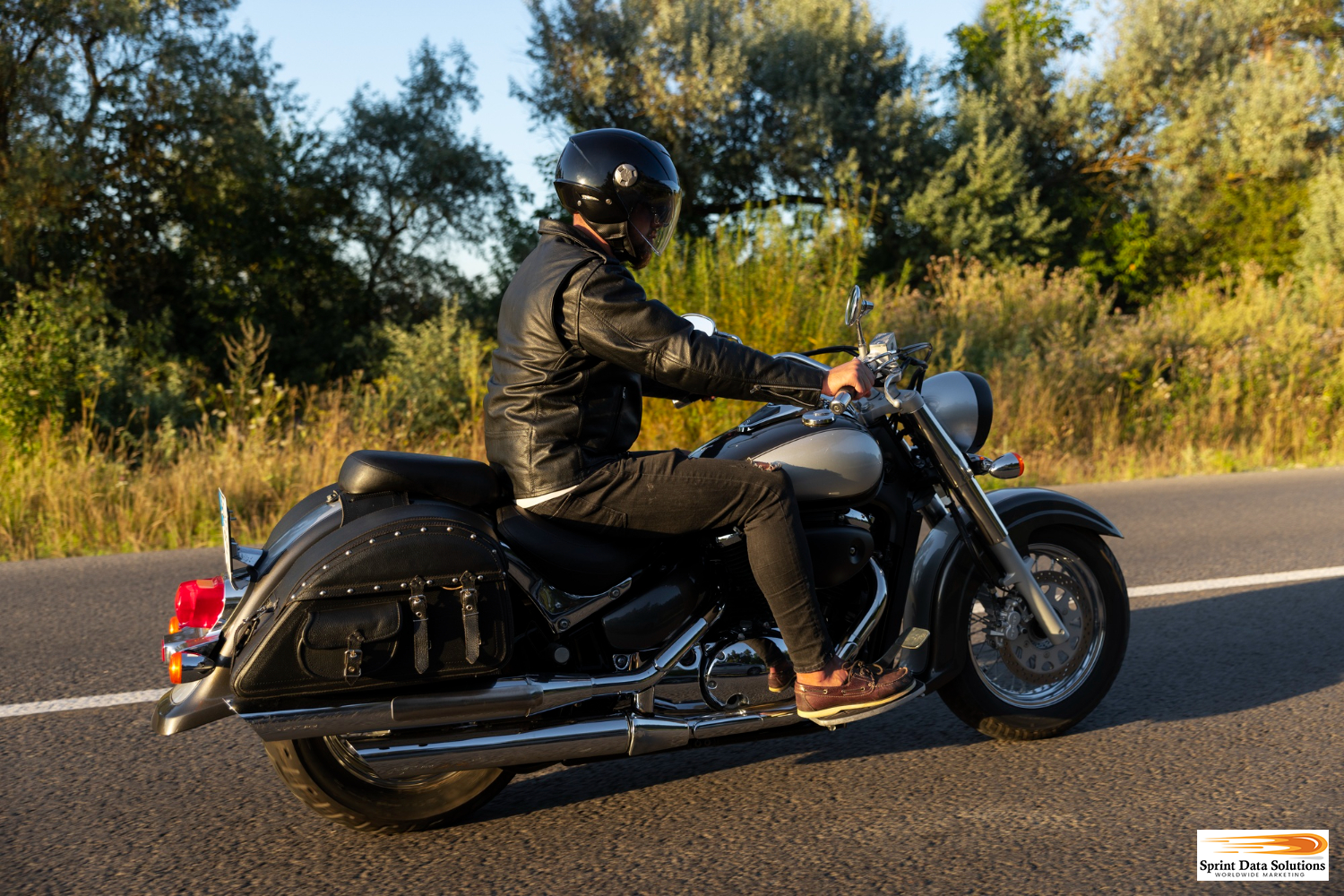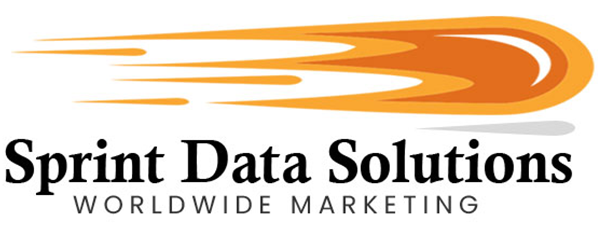Trike Owners Are A New & Growing Market
In the sweeping chronicle of global civilization, the United States occupies a unique position as a relatively young nation—its modern identity forged in the crucible of revolution and rapid innovation. This youthful origin, unshackled by the deeply entrenched infrastructural legacies of older nations, has enabled America to adapt swiftly to technological revolutions. Nowhere is this more apparent than in the country’s vast and highly developed network of roads and highways. Conceived during the rise of the automobile and continually expanded in response to the nation’s growing mobility needs, these interconnected routes form a national circulatory system. They empower millions of Americans to travel freely, not just for work but also for leisure, curiosity, and personal discovery. The highway has become more than just a means of conveyance—it is a cultural icon that embodies the American ideals of freedom, independence, and opportunity.
For well over a century, the motor vehicle has played a pivotal role in shaping the social and economic landscape of the United States. From Henry Ford’s assembly line to the muscle cars of the 1960s and the electric vehicles of today, cars have been emblems of status, progress, and personal liberty. Among these vehicles, motorcycles occupy a distinctive cultural niche. Synonymous with rebellion, adventure, and a raw connection to the road, motorcycles have long held a romantic allure. Riders speak of the unparalleled sense of unity with their surroundings—the wind on their faces, the vibration of the engine, and the undiluted engagement with each mile traveled.
In recent years, a new contender has emerged to redefine this experience: the trike motorcycle. With its three-wheel configuration—two in the rear for balance and one upfront for control—trikes offer a compelling combination of safety, comfort, and style. These vehicles appeal not only to seasoned riders looking for greater stability but also to older adults or those with physical limitations who still crave the thrill of the open road. Unlike traditional motorcycles, trikes often feature ergonomic seating, expanded storage, and advanced safety technologies, making long-distance touring more accessible and enjoyable. As a result, the trike is not merely a novelty or a compromise—it represents an evolution in motorcycle design that aligns with changing demographics and lifestyle needs. In essence, it extends the legacy of motorcycling into a new era, where the journey remains just as exhilarating, but now even more inclusive.
The evolving landscape of consumer transportation preferences reflects more than a mere trend—it marks the emergence of a lucrative and fast-growing market segment. The rise in popularity of trike motorcycles, driven by factors such as aging rider demographics, enhanced stability and safety features, and increasing lifestyle appeal, presents a wealth of untapped opportunities for businesses. Companies now have a unique window to engage with this niche yet expanding customer base by offering a broad array of tailored products and services—from customized parts and gear to specialized insurance plans, travel packages, maintenance solutions, and exclusive community experiences. Recognizing the tremendous potential in this market, Sprint Data Solutions Worldwide Marketing has taken decisive action to empower businesses seeking to connect with the trike motorcycle community. By leveraging cutting-edge marketing technologies, deep consumer behavior analytics, and one of the most comprehensive and precisely segmented consumer databases available, Sprint Data Solutions delivers powerful, results-driven campaigns. These tools enable companies to not only reach but deeply resonate with their target audience, helping them secure a competitive edge in this dynamic and promising sector.

What Is A Trike Motorcycle?
A trike motorcycle, as the name suggests, operates on a similar concept to a conventional motorcycle but is distinct in having three wheels instead of two. This three-wheeled configuration can vary based on manufacturer design or rider preference, typically arranged either with two wheels in the front and one in the rear or, more commonly, one wheel in the front and two at the rear. While the modern trike might seem like a novelty, the concept of a motorized tricycle has existed since the 19th century, a time marked by innovation and experimentation in personal transportation before the automobile industry standardized around two- and four-wheel configurations. In the early 2000s, a resurgence of interest in three-wheeled motorcycles emerged, driven largely by custom builders who began offering professional conversion services to transform standard motorcycles into trikes. These conversions gained such popularity that by 2009, Harley-Davidson—a longstanding leader in the motorcycle industry—introduced its own factory-produced motor trike, entering a market previously dominated by small-scale custom shops. This move sparked increased interest and investment from other major manufacturers, contributing to a growing trike market segment. Trikes appeal to a wide range of riders due to their enhanced stability, comfort, and unique aesthetic, making them an increasingly viable alternative within the broader motorcycle community.
The Trike Difference
Trikes, or three-wheeled motorcycles, are not simply designed for aesthetic appeal or fashion-forward riders—they serve a highly functional purpose centered on stability. The inclusion of a third wheel significantly alters the dynamics of the ride, offering a self-supporting structure that eliminates the need for the rider to actively maintain balance. Unlike traditional two-wheeled motorcycles that require core strength and balance control, trikes can stand upright independently, much like a car. This stability not only reduces the physical demands on the rider but also improves safety, particularly during low-speed maneuvers or while stopped at intersections.
The early rise of trikes as custom builds by small workshops stemmed from a deeply personal need among motorcycle enthusiasts. Many of these riders were aging individuals or those who had sustained injuries that compromised their balance and strength. Despite their physical limitations, their passion for the open road remained undiminished. Trikes offered a solution that allowed these individuals to continue enjoying the thrill of motorcycling without the risk or strain of balancing on two wheels. In addition to aiding seasoned riders with reduced mobility, trikes also served as a welcoming entry point for beginners who may have found traditional motorcycles intimidating due to their required skillset and physicality.
As the appeal of trikes widened, so did the recognition of their market potential. What started as a niche offering soon captured the attention of major manufacturers. Brands like Harley-Davidson recognized that trikes not only kept veteran riders engaged but also attracted a fresh demographic—those who desired the exhilaration of motorcycle riding without its more daunting aspects. As a result, production shifted from small-scale customization to mass manufacturing, giving rise to sophisticated models with enhanced design, comfort, and technology.
Today, the evolution of trikes includes innovative models like the Polaris Slingshot, which push the boundaries of traditional motorcycle design. These vehicles often feature side-by-side seating and car-like steering wheels, combining the essence of motorcycling with the comfort and familiarity of automobile controls. Despite these advancements, such vehicles are often still legally classified as motorcycles, highlighting the blurred lines in this evolving category. Ultimately, trikes have carved out a unique space in the personal transportation landscape—bridging accessibility, comfort, and adventure in ways that conventional motorcycles often cannot.
Who Is The Market?
The demographic that uses trikes often overlaps significantly with those who already ride motorcycles. Many motorcycle enthusiasts are drawn to trikes for their familiar open-road experience combined with added stability and comfort. However, the trike market is not limited to traditional motorcyclists; it is also expanding to attract new users from diverse backgrounds. Chief among these are older riders who seek a safer and more comfortable alternative to two-wheeled bikes, individuals with physical limitations that make balancing on a motorcycle difficult, and recreational riders who prefer a more relaxed, touring-friendly mode of travel. As awareness and interest grow, trikes are increasingly seen not just as niche vehicles, but as viable options for a wide array of consumers seeking both practicality and enjoyment in their riding experience.
Elderly Riders
Trikes initially gained popularity among a niche group of riders, and that original market remains vibrant today. In the United States, motorcycles have long been emblematic of freedom, independence, and a spirited lifestyle. As a result, many older adults—now entering their senior years—spent their youth riding traditional two-wheeled motorcycles. However, with age often comes a decline in balance, reflexes, and overall mobility, which can make handling a standard motorcycle challenging or even unsafe. Trikes, with their three-wheel design, offer a practical and appealing alternative. They eliminate the need for balancing and counter-steering while preserving the exhilarating, open-air sensation that defines the motorcycle experience.
This shift in mobility needs has created a promising and steadily growing demographic: senior riders who remain passionate about the motorcycling lifestyle but require safer, more stable options. As these enthusiasts look to continue their journeys on the road, there is a significant opportunity for manufacturers and service providers to develop specialized products, accessories, and experiences tailored to their unique needs—ranging from ergonomic seating and adaptive controls to community tours and maintenance services. The market for senior riders is not only enduring but evolving, opening the door for innovation and inclusivity in the world of recreational riding.

Disabled Riders
Motor trikes provide an exceptional alternative for individuals with disabilities who are unable to ride traditional two-wheeled motorcycles. While some disabilities, such as blindness, make any form of personal vehicle operation impractical, others—like single-limb amputations, paralysis, or reliance on a wheelchair—do not necessarily preclude someone from enjoying the thrill and independence of motorcycling. Motorcycles, by nature, demand significant balance, coordination, and physical engagement, but trikes remove many of these barriers. With their three-wheel design, motor trikes eliminate the need for balance and counter-steering, offering greater stability and control—especially important for those with limited lower-body mobility or strength.
Moreover, trikes can be extensively customized to suit specific physical needs. For instance, modifications can relocate all vital controls—such as the throttle, brakes, clutch, and gear shifting—to the handlebars. This makes it feasible for riders with lower-body paralysis or limb loss to operate the vehicle confidently. The seated position and wider frame also make transferring from a wheelchair more manageable. For many riders with disabilities, these adaptive features restore not just the ability to travel but the freedom, autonomy, and exhilaration that motorcycling uniquely offers. In essence, motor trikes bridge the gap between disability and the open road, opening up a world of adventure with far fewer limitations.
People Who Don’t Like Motorcycles
An unexpected yet welcome shift in the motor trike market is the influx of new riders who might never have considered operating a traditional motorcycle. For many, the steep learning curve, balance demands, and perceived risk associated with two-wheeled motorcycles serve as significant barriers. Motor trikes, however, offer a much more inviting alternative. With their three-wheel design, they provide greater stability and safety, reducing the intimidation factor for first-time riders. Some advanced models even come equipped with full car-like features—steering wheels, side-by-side seating, and protective frameworks—transforming them into something akin to compact, open-air convertibles. Despite these car-like features, they often still require a motorcycle license rather than a standard driver’s license, adding a unique twist to their legal classification.
This evolution has had a profound impact on the rider demographic. Whereas motorcycle culture once appealed primarily to a specific type of consumer, motor trikes are broadening the field. Older adults, individuals with physical limitations, and even those previously uninterested in motor vehicles are finding trikes to be an accessible and appealing mode of transportation or recreation. The result is a more varied and inclusive consumer base, bringing new purchasing behaviors and preferences into play. For businesses looking to tap into this expanded market, diversity among customers isn’t just a trend—it’s a strategic advantage.
This is precisely where Sprint Data Solutions Worldwide Marketing proves invaluable. With a deep understanding of shifting consumer demographics and a robust database of highly segmented marketing leads, Sprint can help businesses connect with this new wave of trike enthusiasts. Whether the goal is direct mail outreach, digital advertising, or integrated marketing campaigns, the ability to precisely target emerging market segments ensures that your product or service reaches those most likely to engage with it. As the motor trike market evolves, so too must your marketing approach—and Sprint Data Solutions is ready to guide the way.
Who Is Sprint Data Solutions Worldwide Marketing?
Sprint Data Solutions Worldwide Marketing is a proudly American-owned and operated enterprise, built on the enduring vision of a disabled veteran. Following his service to the country, the founder transitioned from the military sector into the economic arena, driven by a mission to contribute to America’s commercial growth. The new objective was clear: support U.S. businesses in securing their most vital assets—customers and clients—through innovative, effective marketing strategies.
The company was founded in the vibrant city of Las Vegas, Nevada, where it initially dedicated itself to empowering local businesses. With a firm commitment to integrity, client satisfaction, and results-driven marketing, Sprint Data Solutions quickly earned a reputation for excellence. Its unwavering dedication to quality and personalized service translated into steady growth and success. Today, the company employs a diverse team of professionals whose combined marketing experience spans over half a century, bringing deep industry knowledge and refined expertise to every client engagement.
Sprint Data Solutions entered the marketing world at a pivotal time, during an era when traditional advertising—TV, radio, and print—still reigned supreme, and digital marketing was only just beginning to emerge. The company’s early emphasis on direct mail marketing laid a strong foundation, cultivating advanced capabilities in data acquisition, list management, and analytics. These competencies later became instrumental as digital marketing gained traction, enabling the company to leverage a first-mover advantage when the internet reshaped the industry landscape. Clients benefited from Sprint’s foresight, as it seamlessly integrated digital solutions into its service offerings, allowing brands to reach audiences more efficiently than ever before.
As the business evolved, so did its geographical reach. What began as a local service in Nevada quickly grew to encompass the entire United States, including Alaska and Hawaii. With time, Sprint Data Solutions expanded beyond domestic borders to offer marketing services across North America, including Canada and Mexico. The company’s international footprint has since extended into the European Union, offering access to major commercial hubs such as France. Today, Sprint stands as a global marketing partner, equipped to assist clients across diverse regions, industries, and consumer demographics.
With its roots in traditional marketing and its growth propelled by digital innovation, Sprint Data Solutions Worldwide Marketing remains committed to helping businesses thrive in a competitive global marketplace. By continuously adapting to changing trends and technologies while maintaining its core values, the company exemplifies the spirit of resilience, ingenuity, and entrepreneurial drive.

How We Can Help
Sprint Data Solutions Worldwide Marketing has invested years into building one of the most robust and dynamic contact databases in the industry. This compilation of contact information is not only vast but also sourced with a commitment to ethical and legal integrity. Every piece of data is acquired through transparent opt-in systems, such as subscriptions to newsletters, participation in services and market research surveys, and voluntary submission of business cards for networking or promotional purposes—all with clear consent for further marketing use. What sets this database apart is its continuous curation; data isn’t static. People frequently change addresses, shift to new employers, or may no longer be valid contacts. That’s why Sprint Data Solutions has a rigorous process for reevaluating, updating, and verifying its records to ensure that clients receive only timely, relevant, and actionable information.
But possessing millions of contact records is only the foundation. The real value lies in intelligent refinement. Sprint Data Solutions deploys advanced artificial intelligence and machine learning algorithms to perform deep data analytics. These systems aren’t just crunching numbers—they’re applying customized filters and client-specific criteria to extract the most appropriate and strategically valuable subsets of data. The result is not a generic contact list, but a curated, segmented dataset aligned perfectly with the client’s campaign goals. Whether a client seeks to reach new homeowners, C-level executives, retirees with disposable income, or individuals with particular health conditions, the data is analyzed, validated, and structured to meet those needs precisely.
Geographic segmentation is a core pillar of this system. Campaigns can be executed on a sweeping national level or fine-tuned to very precise geographic zones. Clients may choose to target entire states, specific regions like the Midwest or Southwest, or zero in on highly localized areas such as neighborhoods within a city. For instance, a campaign aimed at eco-conscious consumers in the Pacific Northwest can be narrowed further to Portland, Oregon, and even more specifically to affluent and environmentally active areas like the Pearl District. This level of geographic targeting allows for hyper-local campaigns with far greater resonance and engagement.
Equally essential to campaign effectiveness is demographic targeting. The database isn’t simply a collection of addresses—it’s a reservoir of rich human profiles. Contacts can be sorted and filtered by ethnicity, religious affiliation, income bracket, age group, or health conditions, among many other metrics. This ensures clients are reaching not just where people live, but who they are and what they care about. For example, a service tailored for Hispanic entrepreneurs or a product aligned with Jewish cultural practices can be matched to relevant audiences. Similarly, pharmaceutical campaigns for individuals managing chronic conditions like diabetes or asthma can be laser-focused to reach those who are most likely to benefit, resulting in higher response rates and better outcomes for both clients and consumers.
Contact Formats & More
Sprint Data Solutions Worldwide Marketing offers comprehensive contact databases tailored to meet client-specific marketing requirements. These databases include contact details in a variety of client-specified formats. For campaigns utilizing traditional outreach methods, physical mailing addresses are provided for both general consumer audiences and B2B targets. Similarly, email contact lists are available for individuals and corporations, enabling precision in digital outreach strategies. For marketing plans that prioritize direct communication, telephone numbers are accessible as well. Residential listings are included for consumer campaigns, while B2B listings go beyond generic contact details by providing direct lines to key decision-makers—bypassing front-desk gatekeepers. Additionally, mobile numbers are available, allowing marketers to implement SMS and text-based promotional efforts with greater reach and effectiveness.
In addition to standard database offerings, Sprint Data Solutions provides specialized services for clients seeking more hands-on assistance. Some businesses may wish to launch comprehensive marketing initiatives but lack the internal expertise to oversee the process confidently. To bridge this gap, Sprint Data Solutions offers a full turnkey direct mail solution. This service encompasses every aspect of a direct mail campaign—concept development, content creation, printing, and final distribution—all managed in-house. By consolidating every stage under one roof, clients eliminate the burden of coordinating with multiple vendors, thereby reducing risk, streamlining workflows, and ensuring a cohesive, professional marketing execution from start to finish.
If you have a product or service tailored to trike owners, Sprint Data Solutions Worldwide Marketing is your gateway to reaching the right audience. Our extensive database includes verified, up-to-date contacts of trike enthusiasts and buyers across multiple demographics and regions. Whether you’re launching a new accessory, offering maintenance services, or promoting an event, we can provide targeted leads that drive real engagement and boost your sales. Partner with us to connect with the customers who matter most—because the right data makes all the difference.


